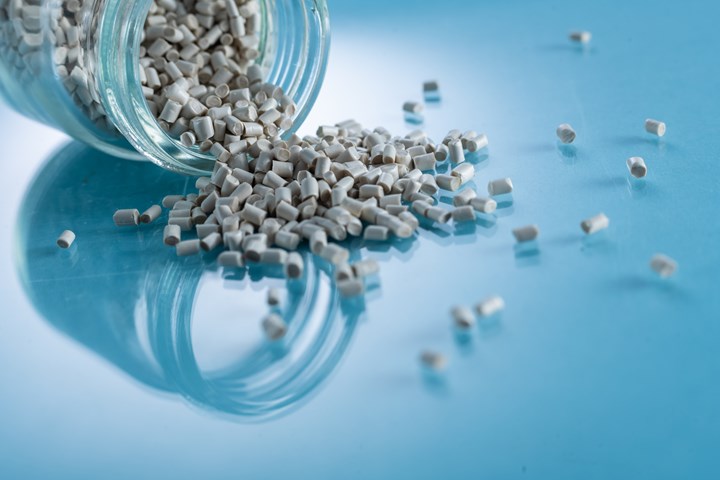CAMX 2020 exhibit preview: AGC Chemicals
AGC Chemicals Americas' mPLASTICS are new fluoropolymer-modified compounds to enhance the performance of carbon fiber-reinforced thermoplastic composites.

Source | AGC Chemicals
(Exton, Pa., U.S.) is introducing mPLASTICS, new fluoropolymer-modified compounds to enhance the performance of carbon-fiber reinforced thermoplastic (CFRP and CFRTP) composites with strength, impact resistance, wear resistance, flexibility, heat tolerance, adhesion and electrical properties.
According to the company, mPLASTICS compounds are ideal for applications that require a durable, lightweight material, such as automobiles, aircraft and sporting goods. Parts and components molded at high temperatures with these materials are said to have fewer defects, improving yields.
At the virtual CAMX conference, David J. Lavanga, innovation engineering manager with AGC, is presenting “Improving Engineering Plastics Performance by Fluoropolymer Modification.” He is discussing performance advantages of using fluoropolymer-modified polyamides (mPA), fluoropolymer-modified polyetheretherketone (mPEEK) and fluoropolymer-modified polyphenylene sulfide (mPPS) in composite applications.
According to AGC Chemicals, mPEEK can be used to produce different geometries such as sheets, rods, tubes, gears, liners, wire and cable insulations, and films that better withstand demanding operational conditions. The modified material is also said to improve processability via extrusion molding, injection molding and compression molding, and to demonstrate a lower dielectric constant than standard PEEK at high temperatures up to 260°C.
The company says that mPPS can be used to produce films, bearings, bushings, hoses and other flexible tubing and liners for chemical processing and oil & gas industries. It is said to be ideal for applications that require high temperatures (greater than 200 °C) and chemical resistance as well as retained performance.
Related Content
-
Welding is not bonding
Discussion of the issues in our understanding of thermoplastic composite welded structures and certification of the latest materials and welding technologies for future airframes.
-
Plant tour: Sekisui Aerospace, Orange City, Iowa, Renton and Sumner, Wash., U.S.
Veteran composites sites use kaizen and innovation culture to expand thermoplastic serial production, 4.0 digitization and new technology for diversified new markets.
-
Composites end markets: Sports and recreation (2025)
The use of composite materials in high-performance sporting goods continues to grow, with new advancements including thermoplastic and sustainability-focused materials and automated processes.
.jpg;width=70;height=70;mode=crop)





